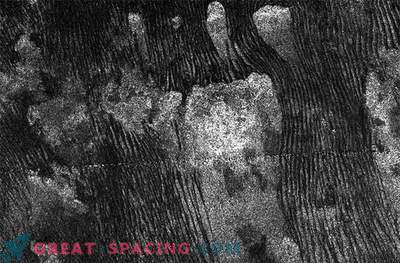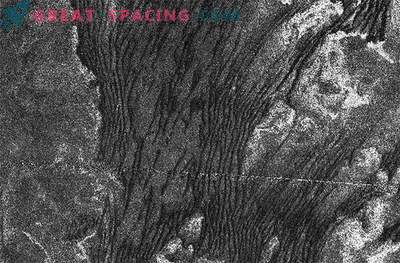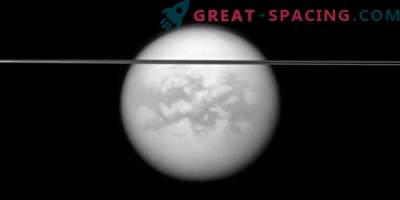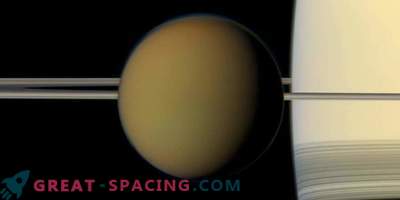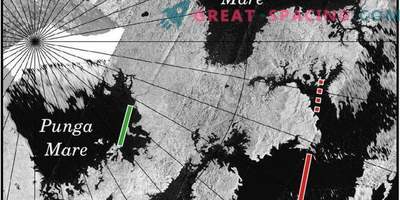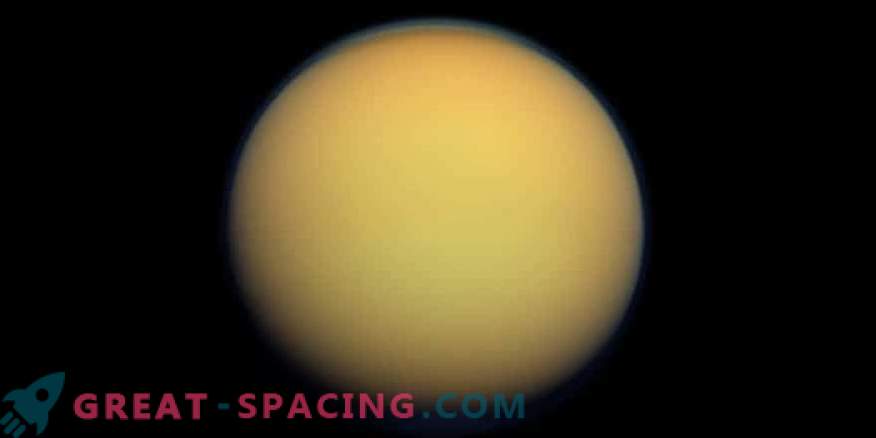
A new study reports that Titan wind dunes can stretch millions of miles more than previously thought. They were probably formed as a result of geological processes resembling earthly ones.
The atmosphere of Titan (the largest satellite of Saturn) is incredibly dense, with thick layers of organic compounds floating inside. But go through it and notice the frigid landscape resembling earthly deserts. On the surface of the moon are valleys, canyons, lakes, mountains and dunes. Many of them are shaped by Titan's weather system, where liquid hydrocarbons, like methene, fall as rain.
Researchers point out that the geological process behind these dunes may follow the same mechanisms that created terrestrial canyons and river channels. Titan's hydrocarbon rains trigger a process that begins at the top of the equatorial mountain ranges and ends with sprawling dunes and dust storms.
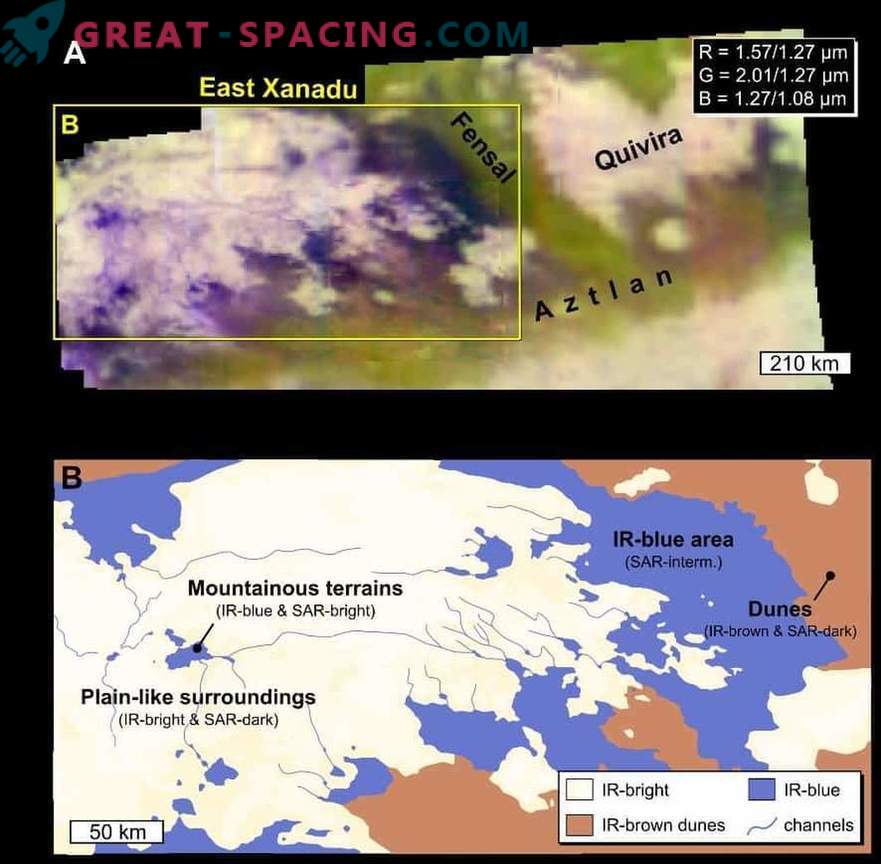
A snapshot and illustration of the equatorial region of Titan reveal the complex landscape of mountains, river channels and plains. Scientists believe that the white areas - highlands, elevated areas, where thin coatings of organic material mask the underlying ice deposits. Blue - extinction zones where ice accumulates When analyzing the images of the equator of Titan, there also appeared an assumption that the dunes cover a much larger area than is commonly believed. The data of the new study increases the previous figure by 3 million km 2, which is comparable with the ten Namib deserts.
Titanium has a nitrogen-rich atmosphere, an active weather system and organic compounds on the surface, so the latter can be hospitable to life and its prebiotic components.
Early glimpses
For the first time, scientists carefully looked at the surface of Titan in 1994 using the Hubble Space Telescope. It was then believed that the large dark areas around the equator were liquid hydrocarbon lakes. Now we know that these are wide plains, riddled with dunes. This was understood by the flight of Cassini. The device was launched in 1997, and in 2017 it burned down in the upper atmosphere of Saturn. Among its instruments was the SAR radar, which showed the shape of the Titan's surface, reflecting radio waves from the satellite’s appearance. Managed to show the mountains, valleys and even canyons.
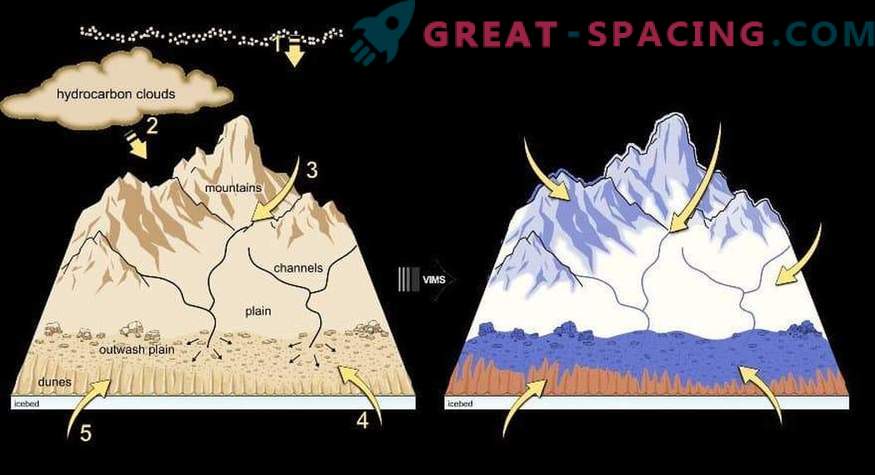
The illustrations show a geological process capable of having a connection with the formation of the dunes of Titan. It starts at the top of the mountains, where water ice and tolins are washed away along river channels into lowland basins.
Comparison of the shape of the surface of Titan - the first decisive step in understanding the geological processes unfolding on a frigid landscape. But finding out the composition (ice, stone, sand, or something else) is a completely different matter. For this, I had to use a VIMS device that resembles a camera. It records images in 352 different colors and registers the wavelengths of light from 300 to 5100 nanometers. The human eye is capable of 380 to 620 nanometers. Scientists simulated various mixtures of substances that may be on the surface, and evaluated their spectral properties or light signatures. This information helped create the models.
How did the dunes of Titan appear?
New images from VIMS suggest a geological process for the formation of dunes, which begins at the very top of the equatorial mountain ranges. There, the dense atmosphere of the moon constantly creates a thin coating of small organic molecules (tolin), which are reflected in Cassini instruments.
Researchers suggest that methane rain destroys mountain peaks. Erosion washes away tolines and ice fragments into lowland basins, where they gradually accumulate. Then the winds of Titan blow the mixture to the equatorial areas where dunes form. This process is reminiscent of how dunes are created in terrestrial conditions.
